
ABOUT SCULPTURE
Marble, bronze, plexiglass … Sculpture is deeply rooted in European tradition, its classical concepts and materials are constantly being explored and reinvented. Dorotheum specialist Maria Cristina Corsini gives an overview of some of the most exciting creations of Modern sculpture that will be for auction at Dorotheum this June.
The power and allure emanating from classical sculptures begins with the removal of material from a block of marble, in which one aims to both imprison energy and liberate the stirrings of the soul, embodying them in the form of light and shadow.
The history of art in the 20th century is one of a frenetic succession of alternating cycles of revolution and academic ebb and flow. From cycle to cycle, the artist experiments cut by cut, tear by tear, distancing him- or herself ever more from formal rigour and from the material, defining plastic structures beyond traditional techniques, in continual pursuit of interconnection between the arts.
Sculpture, the most jealously guarded of the classical disciplines and the most strongly linked to a “European” concept of history, investigates the poetry of scrap and fragment and adopts the techniques of industry artisan and carpentry. It recreates raw material from the disintegration of the industrial product.
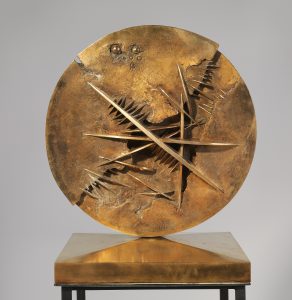
Pomodoro For Arnaldo Pomodoro the modulations developed in bronze create a dense web of expressive connections, a “dialectic process between infinite spatiality and organic structure”, as he himself declared in an interview in 1964. These “scriptures”, which both positively and negatively animate the surface of his sculptures, interact with the viewer.
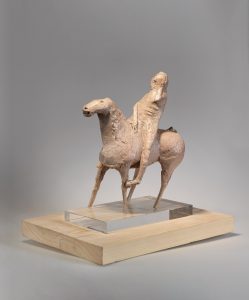
Marini In 1936 Marino Marini first addressed the theme which would make him famous across the world: In the years preceding the war, Marini’s “Cavalieri” (Riders) appeared as steady, balanced figures of alternating soft and square shapes. Later, the same theme would manifest itself in “Miracoli” (Miracles), toppled figures, a tragic figurative interpretation of historical reality.
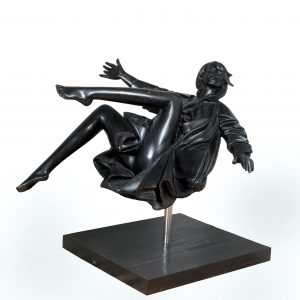
Manzù While Giacomo Manzù was initially linked spiritually to the Romantic tradition of Medardo Rosso, his vigorous personality and personal language soon emerged and placed him well outside the sculptural explorations of his time. The elegance which envelops all his sculptures, including many works with an apparently religious theme, reveals his profound, spontaneous and yet unmistakable humanism.
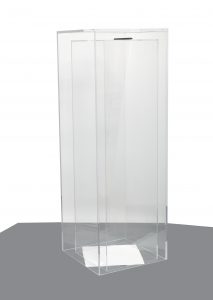
Paolini “Niente e subito” (Nothing and Now) bears further testimony to Giulio Paolini’s coherence and sophisticated conceptual approach. Two rectangles of plexiglass, one within the other, enclose a pencil at the top and a white sheet of paper at the bottom. The “nothingness” (which is contrasted by the phrase “everything and now”) finds its image in silent motionlessness. The “nothingness” and the drawing implements that present themselves to our gaze, take the place of an object and provide the potential for any subject to emerge.

Mitoraj The figures of Igor Mitoraj’s push the limits of classical form though their sculptural rigour, while at the same time only superficially embodying the archaic style. His unmediterranean cultural background compels the artist to challenge the classical idiom. He shatters and fuses his icons, dragging them into modernity.
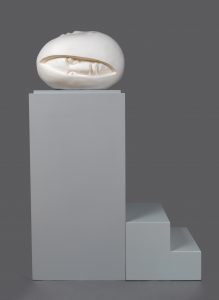
Kabakov Ilya Kabakov is one the conceptual artists most representative of the 20th century. Meeting his wife Emilia resulted in a union of life and art which would bring them to create works and installations together. Their language is based on an analysis of their experience of life in the Soviet Union, picking up on existential themes.
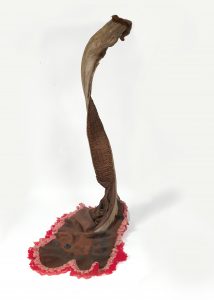
Hlobo Deeply rooted in South Africa’s Xhosa culture, Nicholas Hlobo deals with themes of identity and sexuality in post-apartheid society. Rubber, satin ribbons, organza, leather, and reclaimed materials are the elements the artist chooses to compose haptic sculpture and designs in which the material assumes metaphorical meaning. The contrast between femininity, represented by silk ribbons, and masculinity, symbolised by car tyres, results in an ambiguous approach to sexuality.
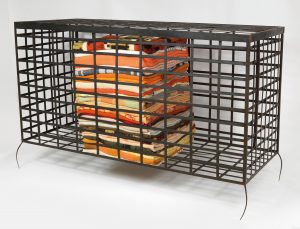
Bruyckere The Flemish artist Berlinde De Bruyckere’s choice of material is strongly symbolic. Wax, horse leather, blankets, velvet, but also boxes and cages contribute to her visualisation of a visionary universe which, from the early 1990s onwards, appears to be concentrated on human anatomy. Fragments and contorted bodies, often guarded and protected by blankets, are the constant theme of her later work, which continues to centre on the mortality of the body.
INFORMATION about the AUCTION
Auction date:
Modern Art, 4 June 5 p.m.
Post War and Contemporary Art I, 5 June 5 p.m.
Post War and Contemporary Art II, 6 June 4 p.m.
Location: Palais Dorotheum, Dorotheergasse 17, 1010 Vienna
Exhibition: from Saturday, 25. Mai











